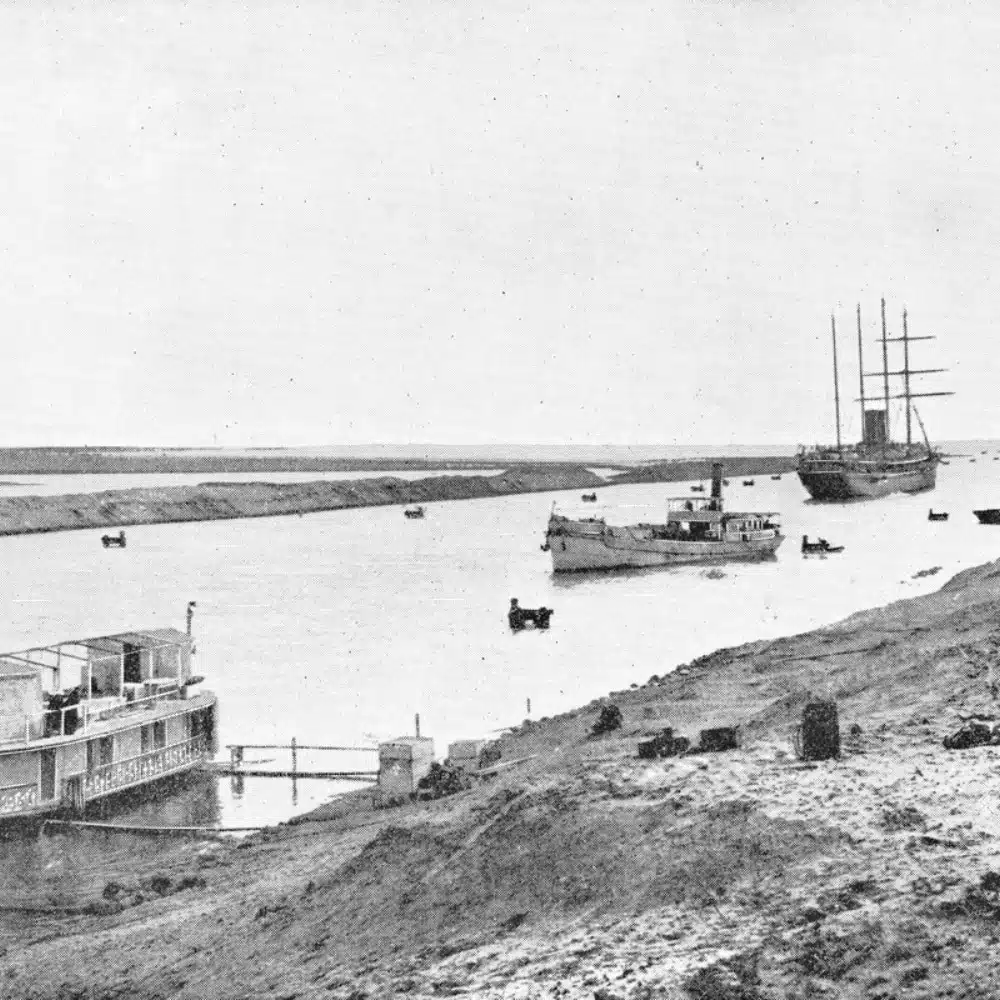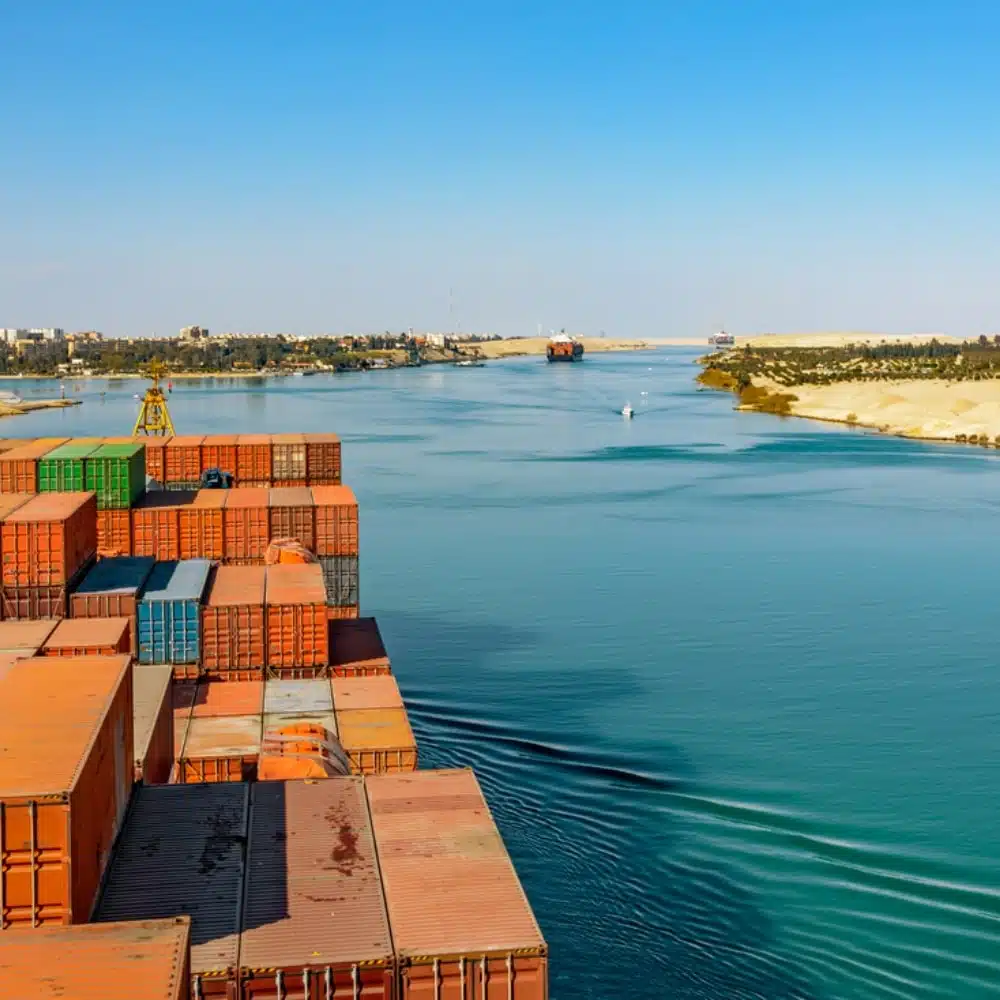Interview with Christian Makarian, deputy editor of L’Express
It was an old dream and an impossible project in some people’s eyes. In 2019, however, the Suez Canal celebrated its 150th anniversary. This is only really an honorary birthday, given that the Pharaohs designed the first canal 4,000 years ago and a new channel was inaugurated in 2017. While geopolitical and economic issues have always been a predominant part of its history, the crossing point that is the Suez Canal represents an undeniable link between civilisations and remains a major step forward, as recalled by Christian Makarian, deputy editor of L’Express.
Plans for a canal between the Nile and the Red Sea had already been initiated in the 3,000 years before the Common Era. Over the centuries, it has attracted the interest of all major powers, from the Pharaohs to the Romans, including all the European powers. How does this demonstrate the area’s strategic importance?
The canal was a huge project, designed and built by the Pharaohs despite all the challenges in the natural environment, the aim being to connect the continents. The Pharaohs needed a crossing point to facilitate trade between Africa and the Middle East, but also to extend their influence to the borders of Iran. This was a major geopolitical project. Ultimately, the Pharaohs’ plans came to nothing and the desert reclaimed the area.
When he announced France’s intention to build a canal, Ferdinand de Lesseps put his country at the heart of an international project. So what happened and what was at stake for France in this region?
In the 19th century, France had moved into Algeria. The French wanted to control the Southern Mediterranean and chart a route to the Southern Seas and the Indian Ocean in particular. The Suez Canal project was part of France’s ambition to extend its influence so it could compete with the British Empire. It was also about technical progress, as the project involved tens of thousands of people and some very modern resources. The Suez Canal was a plan to bring together civilisations and develop trade which would propel the modern world into the future. The Suez Canal had the support of the Egyptian government at the time, because it represented a fantastic hope for the countries south of the old continent.

Ferdinand de Lesseps, the bronze colossus of Port Said
Since 17 November 1899, the colossus has looked out over the Mediterranean mouth of the Suez Canal, at the end of Port Said pier. This bronze statue in the Bardedienne style shows Ferdinand de Lesseps holding a map of the Suez isthmus in his left hand. Designed by Emmanuel Frémiet, this symbol of French occupation was removed from its original plinth during the 1956 crisis. Since then, it has been hidden away in a corner of the Egyptian port city, a ghost from a bygone era, waiting for a hypothetical – and political – return to grace.
How did the British manage to take control of the canal?
As soon as it opened, the canal was the subject of a bitter struggle between the British and the French. After the British realised Egypt was deep in debt, London used its financial power to take economic control of the canal and establish a bridgehead for the British empire, halfway between the crown’s possessions in Africa, India and the eastern Mediterranean via the naval bases over which the Union Jack flew.
The canal went from being a universal development project and a bridge between civilisations to a major international policy issue. Britain’s base in Egypt was later to play a crucial role as, during the First World War, it was from there that General Allenby’s troops launched the decisive offensive against the Ottoman Empire, attacking from the south.
Did you know? The Statue of Liberty could have been Egyptian?
“Egypt bringing light to Asia”! This was going to be the name of the colossal statue designed in the 1860s by French sculptor Auguste Bartholdi who, initially rebuffed by the United States, had chosen to offer his services to Egypt for another monumental statue project. This large 19-metre lighthouse was to bear the image of a fellahin, an Arab peasant woman standing guard at the entrance to the Suez Canal, torch in hand. The project was again turned down, this time by the Khedive (or “lord”) of Egypt, Isma’il Pasha. As we know, the sculptor then went back to the United States, where he managed to sell his project. And so, since 1886, Lady Liberty has lit up the world, albeit from the West rather than the East.
Was Nasser’s nationalisation of the canal in 1956 a strong symbol of decolonisation? How did it change Egypt and Europe as a whole?
Nasser believed the canal was central to his ambition to lead the entire Arab world. By nationalising the channel, Nasser thought he would inflict a defeat on the Westerners who supported Israel, and it caused a global crisis. The raid launched by France and Great Britain, with Israel’s support, had to be stopped under pressure from the United States and the USSR. Despite subsequent setbacks, Nasser succeeded in humiliating the French, who at this point were fully engaged in the war in Algeria, as well as the British, Egypt’s former colonial power. This is how Europe’s two great colonial nations suffered a setback in the very place where they had wanted to demonstrate their global hegemony in the nineteenth century.

What does the Suez Canal represent today, as it celebrates its 150th anniversary?
The canal remains an important issue in the 21st century. Field Marshal El-Sisi revived the Pharaohs’ dream by creating a second canal, doubling the size of the initial route. This area is also contiguous to the Sinai Peninsula, which remains a strategic area for Cairo’s authorities. Finally, even though traffic through the canal now makes up a tiny part of international maritime trade, it is clear to everyone who uses the canal that this area remains a key international relations issue in the Middle East, which remains unstable to this day.
Photos credits : © Istock

PONANT takes you there
Immerse yourself in superb cultural and natural heritage on a journey between the Mediterranean and the Red Sea. A journey through time.



